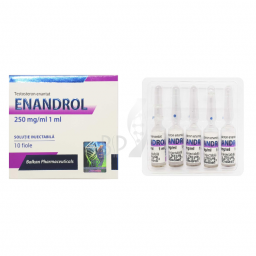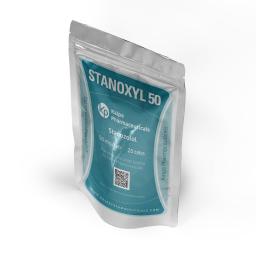Note: Hormone therapy (HT) may also be referred to as hormone replacement therapy (HRT).
What is hormone therapy?
Hormone therapy (HT) or hormone replacement therapy (HRT) is a medication with the combination of the female hormones oestrogen and progesterone, and sometimes the male hormone testosterone. It can be prescribed to relieve symptoms associated with falling levels of hormones – particularly oestrogen – during menopause, such as hot flushes, vaginal dryness, stress incontinence, insomnia and mood swings. HT can also prevent further fractures in women with osteoporosis, where other treatments are not tolerated.
Oestrogen alone is prescribed for women who have had a hysterectomy. In women who still have their uterus, oestrogen alone can overstimulate the cells lining the uterus, causing an increased risk of endometrial cancer. This risk is reduced by giving progesterone along with the oestrogen. Progesterone is known as ‘progestin’ or ‘progestogen’ and is prescribed as a tablet or patch.
Oestrogen can be prescribed as a tablet, patch, gel, implant, injection, cream or pessary (suppository). Dosages and methods of giving the medication vary according to the needs of the individual, and changes may be required before the ideal method and dose is found. Seek advice and supervision from your doctor.
What are the possible side effects of HT?
Some women experience:
- Nausea
- Feeling bloated
- Breast enlargement and discomfort
- Bleeding between periods
- Weight gain
- Increase in risk of blood clots
- Small increase in risk of heart disease and stroke (in peri and post-menopausal women)
What is meant by ‘short-term’ HT and ‘long-term’ HT?
Short-term HT is usually taken for one to five years. Long-term HT is given for five years and longer. Symptoms disappear in many women within five years of menopause, and so short-term HT is all that is usually required.
What are the benefits and risks of HT?
Any decision about HT is an individual one and should be made after each woman is informed about her individual risks, benefits , needs and concerns in consultation with her prescribing practitioner.
HT – Benefits
Treatment of menopause symptoms
The most common menopause symptoms are hot flushes and vaginal dryness. Hot flushes and night sweats are symptoms of the fall in a woman’s oestrogen level at the time of menopause. No other therapy has shown to be as effective as oestrogen replacement therapy in reducing hot flushes.
Vaginal dryness is related to oestrogen loss and women with significant problems may benefit from the use of vaginal oestrogen preparations such as tablets or cream.
Many women using oestrogen therapy also obtain relief from a range of other menopause symptoms which seem to be related to low levels of oestrogen such as lowered mood, anxiety, insomnia, headaches, muscle and joint pain and decreased sex drive.
Other effects of HT
Osteoporosis
HT reduces the risk of osteoporosis. It acts by preventing bone loss. This decreases fractures of the verterbrae (spine) by up to 40 per cent and also reduces hip fractures.
Heart disease
Original studies indicated that oestrogen replacement therapy may protect post-menopausal women against coronary heart disease. Recent trials have confirmed these findings in women aged less than 60 years, but may increase heart disease risk in women starting therapy with oral hormones over 60 and especially over 70 years of age. Standard oral therapy should be avoided in women who already have established coronary heart disease.
Short-term memory and Alzheimer’s disease
Some studies suggest that oestrogen may prevent or delay the onset of Alzheimer’s disease. A recent study in women startin HT over 65 years (average age 72) showed a small increase in the risk of dementia.
Colorectal cancer
There is evidence from a major trial that HT reduces the risk of colorectal cancer.
HT – Risks
Breast cancer
Long-term HT (oestrogen with progestin) is associated with a slight increase in the risk of developing breast cancer. There has been much research into this issue with some studies indicating small risk and others indicating no risk. The report from the American Women’s Health Initiative (WHI) (July 2002) indicated that there was no increase in breast cancer risk in those women who began HT at the start of the trial, though there appeared to be an increase in those who had been on HT before the trials began.
For women who have had a hysterectomy and take oestrogen only the WHI study of 11,000 women has shown no increase (rather a trend to decrease) in breast cancer risk.
Visit your health practitioner for a Pap test every two years and regularly check your breasts. If you’re over 50, make sure you also have a mammogram every two years (a free service from BreastScreen – phone 132 050).
Thrombosis
There is an increased risk of venous thrombosis (blood clots in the veins) in women using HT, however the incidence is very low and more likely in the first year of therapy. More research is needed to identify which women are more likely to be at risk.
HT – Other Considerations
Weight gain
Women tend to gain weight, particularly around the abdomen (stomach) in their middle years whether they take HT or not. Most studies do not show a link between weight gain and HT use. In fact in several studies women who used HT had less weight gain than those who did not.
Bleeding
Some women may experience vaginal bleeding after starting HT. In most instances this can be managed simply by varying the dose or type of HT used. However all persistent unexplained vaginal bleeding must be investigated to exclude other causes such as polyps or fibroids.
Skin
There is some research to suggest that post-menopausal HT may prevent some aspects of skin ageing by increasing skin collagen. However further studies are needed to evaluate the effects of oestrogen on the skin.
Overall the main reason women choose to commence HT is for symptom relief aiming for short-term use (usually between 1-5 years).
When is HT not recommended?
Generally when a woman has:
- A history of breast cancer
- Endometrial cancer
- Unexplained vaginal bleeding
- Clotting disorder
- A history of blood clots in the veins
- A history of or increased risk of heart disease or stroke, including those with diabetes
However, even with one of the above, HT may be beneficial to some women if the risks and benefits are well understood. Women with liver disease, migraine headaches, epilepsy, diabetes, gall bladder disease, fibroids, endometriosis and hypertension all need special consideration before being prescribed HT.
Talking to your doctor
Prior to commencing HT, it is important that you explore your options and discuss both the benefits and the risks with your doctor. Once you have been prescribed HT, a follow-up doctor’s visit is necessary after a couple of months, and an annual review check-up is essential.
Who may benefit from testosterone therapy?
Women experiencing a loss of libido (sex drive), together with tiredness, may benefit from testosterone therapy, providing these symptoms are not related to psychosocial and/or relationship factors.
Testosterone may also be considered with HT for young women experiencing premature menopause. Testosterone is given as an implant or cream and is usually prescribed short-term. It can be given alone or together with oestrogen and progestogen, but no testosterone therapy for women is approved by the Therapeutic Goods Administration (TGA) as yet.
Where can I get more information?
Advice to Medical Practitioners regarding the use of postmenopausal hormone therapy.
Best Steroid Products Online
Androne 250
|
Stano-S
|
Stanoxyl 50
|


